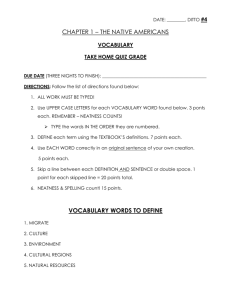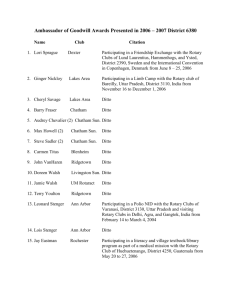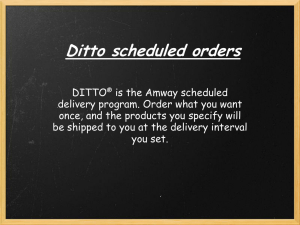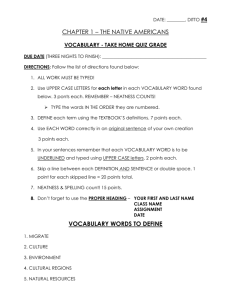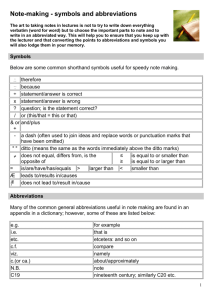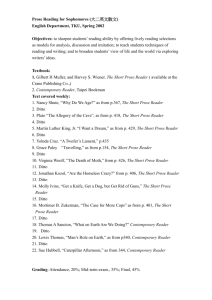Kelly's brief
advertisement
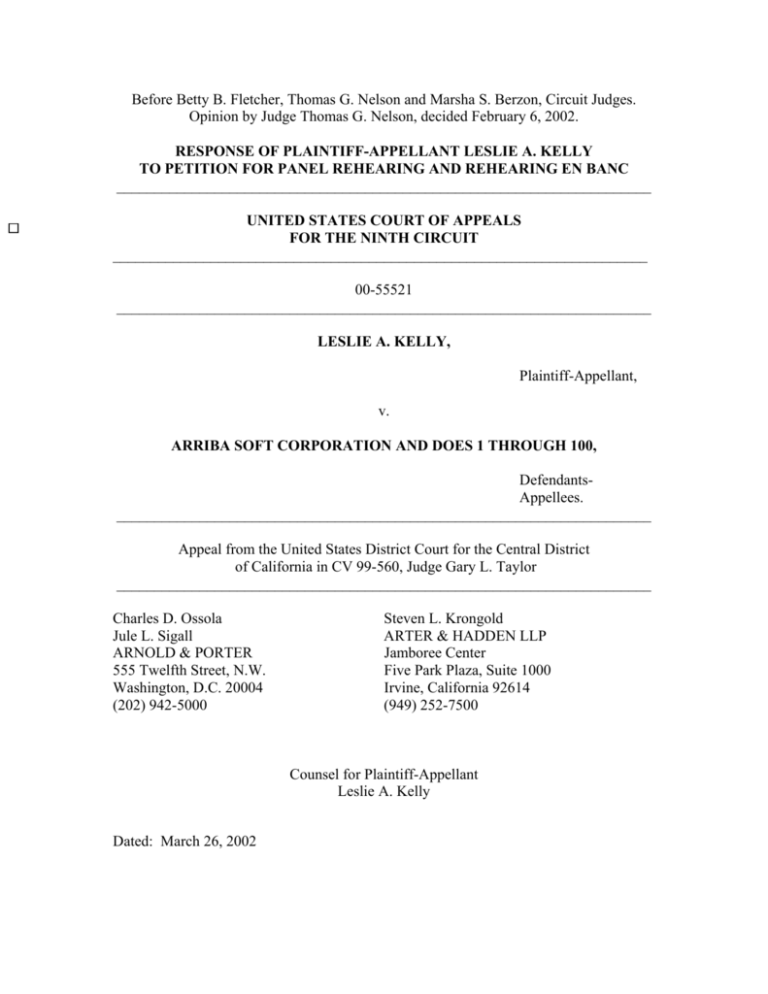
Before Betty B. Fletcher, Thomas G. Nelson and Marsha S. Berzon, Circuit Judges. Opinion by Judge Thomas G. Nelson, decided February 6, 2002. RESPONSE OF PLAINTIFF-APPELLANT LESLIE A. KELLY TO PETITION FOR PANEL REHEARING AND REHEARING EN BANC _______________________________________________________________________ UNITED STATES COURT OF APPEALS FOR THE NINTH CIRCUIT _______________________________________________________________________ 00-55521 _______________________________________________________________________ LESLIE A. KELLY, Plaintiff-Appellant, v. ARRIBA SOFT CORPORATION AND DOES 1 THROUGH 100, DefendantsAppellees. _______________________________________________________________________ Appeal from the United States District Court for the Central District of California in CV 99-560, Judge Gary L. Taylor _______________________________________________________________________ Charles D. Ossola Jule L. Sigall ARNOLD & PORTER 555 Twelfth Street, N.W. Washington, D.C. 20004 (202) 942-5000 Steven L. Krongold ARTER & HADDEN LLP Jamboree Center Five Park Plaza, Suite 1000 Irvine, California 92614 (949) 252-7500 Counsel for Plaintiff-Appellant Leslie A. Kelly Dated: March 26, 2002 TABLE OF CONTENTS Page TABLE OF CONTENTS................................................................................. i TABLE OF AUTHORITIES .......................................................................... ii INTRODUCTION .......................................................................................... 1 ARGUMENT.................................................................................................. 3 I. II. The Panel’s Opinion Does Not Challenge the Uniformity of the Court’s Decisions Nor Does It Present a Matter of Exceptional Importance. ........................................................................................... 4 A. Ditto Mischaracterizes the Law of What Constitutes an Infringing Display. ..................................................................... 4 B. Ditto Mischaracterizes the Nature of its Conduct as “Mere Linking." ......................................................................... 6 C. The Panel’s Analysis of Ditto’s Conduct is Consistent with the Cases Cited by Ditto. ................................................... 9 D. The Panel’s Fair Use Analysis Does Not Conflict with Supreme Court Precedent and Does Not Raise a Matter of Exceptional Importance. ...................................................... 10 The Amici’s Claims That This Case Presents a Matter of Exceptional Importance Consists of a Parade of Horribles Led by a Straw Man................................................................................... 15 CONCLUSION............................................................................................. 16 i TABLE OF AUTHORITIES Page(s) Cases: Allarcom Pay Television, Ltd. v. General Instrument Corp., 69 F.3d 381 (9th Cir. 1995) ............................................................ 9, 10 Arpin v. Santa Clara Trans. Agency, 261 F.3d 912 (9th Cir. 2001) ............ 13 Campbell v. Acuff-Rose Music, Inc., 510 U.S. 569 (1994)..................... 12, 13 Columbia Pictures Indus., Inc. v. Professional Real Estate Investors, Inc., 866 F.2d 278 (9th Cir. 1989) ................................................................ 9 Fonovisa v. Cherry Auction, Inc., 76 F.3d 259 (9th Cir. 1996) ................... 10 Hustler Magazine, Inc. v. Moral Majority, Inc., 796 F.2d 1148 (9th Cir. 1986)............................................................ 12 Los Angeles News Serv. v. Reuters Television Int'l, Ltd., 149 F.3d 987 (9th Cir. 1998) .............................................................. 12 Sony Corp. v. Universal City Studios, Inc., 464 U.S. 417 (1984) .... 10-11, 12 Federal Statutes: Fed. R. App. P. 35(a) ...................................................................................... 3 Fed. R. App. P. 40 (a)(2)................................................................................. 4 17 U.S.C. § 101............................................................................................... 6 17 U.S.C. § 512(d) .................................................................................... 3, 13 Miscellaneous: 147 Cong. Rec. E182-02, E183, 2001 WL 124374 (Feb. 14, 2001) (letter of Marybeth Peters, Register of Copyrights)............................. 9 ii H.R. Rep. 94-1476, at 64 (1976), reprinted in 1976 U.S.C.C.A.N. 5659, 5678..................................................................... 5 Melville B. Nimmer & David Nimmer, Nimmer on Copyright, § 8.14[C][2], at 8-189 (1999) ............................................................... 6 U.S. Copyright Office, Copyright Law Revision Part 6: Supplementary Report of the Register of Copyrights on the General Revision of the U.S. Copyright Law 20 (Comm. Print 1965).................................. 8 iii INTRODUCTION The arguments for rehearing presented by Defendant-Appellee Ditto.com, Inc. (formerly Arriba Soft Corp.) (“Ditto”) and its amici suffer from the same flaw as the briefs on appeal: they attempt to characterize Ditto’s infringing display of full-size images of Kelly’s copyrighted works as the “mere linking” by Ditto to Kelly’s web site. In fact, Ditto made the conscious and deliberate choice not to merely link and direct users to Kelly’s web site. Instead, Ditto structured its web site so that the user need never visit Kelly’s site to view the full-size images of Kelly’s works. Ditto initially surrounded its display of Kelly’s full-size images with Ditto’s advertising and its logos in a seamless manner, with no trace of the original context in which Kelly intended those photographs to appear. See Petition for Panel Rehearing and Rehearing En Banc (“Petition”) at Tab 1. It then revised the service – reflecting the control it has over how images are displayed – to show the full-size image by itself in a separate window, which obscures a partial window with the originating web site and yet a third window with Ditto’s main search results page. Petition at Tab 2. Ditto could have chosen to link its users directly to Kelly’s web site. It could have chosen to display only thumbnails of Kelly’s images, which the Panel held was a fair use. Ditto, however, went further – and, as the Panel found, it went too far. Ditto chose to present Kelly’s copyrighted works in a manner quite different from the way he intended them to be viewed on the Internet. It did so to sell advertising and products to its users, thereby undermining the promotional use that Kelly tried to make of his photographs. The fact that Ditto used hyperlinks to accomplish these unauthorized displays was not dispositive in the case, as the Panel properly understood. Rather, as the Panel correctly recognized, it is how those links were used in Ditto’s system to present Kelly’s copyrighted images that is relevant to the infringement and fair use analysis. Employing a well-established, fact-based fair use analysis, the Panel determined that some of what Ditto did was protected by fair use, but in some respects, it went too far. That fact-specific analysis, which finds no parallel in the exaggerated and inaccurate characterizations of the panel’s decision in the petition for rehearing and in the amici briefs supporting the petition, casts no doubt on linking generally, and creates no uncertainty about the applicability of fair use to the unauthorized display of copyrighted images on the Web. Quite the contrary is true. The Panel’s decision provides clear guidance to search engines and copyright owners alike as to what sort of displays may be protected by fair use, and what sort of displays encroach upon the rights of the copyright owner. The specific legal arguments Ditto makes to support its claim for rehearing are little more than makeweight. It argues that Kelly never presented evidence that anyone viewed his images through Ditto’s service, even though the Copyright Act and its legislative history make clear that no such proof is needed – and Ditto destroyed the best evidence of what its users did with Kelly’s images. Nor do the Ninth Circuit cases Ditto cites present any conflict with the Panel’s proper rejection of this argument. Ditto then argues that it does not make transmissions because nothing is displayed until a user selects which image to view on her computer screen, and therefore the user actually makes the transmission, not Ditto. However, 2 all of the details about how that image appears to that user are controlled and determined exclusively by Ditto. In those circumstances, it is clear that Ditto is the moving cause behind the display of Kelly’s works via transmission. Indeed, Congress created the display right in the 1976 Act in anticipation that a single copy may be shown to a great number of viewers through the use of technology. Finally, Ditto attempts to invent a conflict with Supreme Court fair use precedent by citing a ruling intended for a different circumstance completely out of context. When the full text of the Supreme Court’s holding is considered, it actually supports the Panel’s ruling that Ditto’s display of full-size images was not fair use. In addition, Ditto attempts to invoke the protections of Section 512(d) of the Copyright Act in its Petition, despite having never mentioned that statutory provision in its appellate brief. These concocted issues are not of the “exceptional importance” required for rehearing. In sum, nothing in the Petition or the amici briefs supports rehearing in this case. ARGUMENT Rule 35(a) of the Federal Rules of Appellate Procedure provides that “[a]n en banc … rehearing is not favored and ordinarily will not be ordered unless: (1) en banc consideration is necessary to secure or maintain uniformity of the court’s decisions; or (2) the proceeding involves a question of exceptional importance.” Fed. R. App. P. 35(a). This case presents neither of these circumstances. Nor does this case involve any “point of law 3 or fact that the … court has overlooked or misapprehended” as required for Panel rehearing under Fed. R. App. P. 40 (a)(2). I. The Panel’s Opinion Does Not Challenge the Uniformity of the Court’s Decisions Nor Does It Present a Matter of Exceptional Importance. A. Ditto Mischaracterizes the Law of What Constitutes an Infringing Display. The first argument in Ditto’s petition is a factual one: it asserts that Kelly never provided evidence that any third party viewed the full-size versions of his images through Ditto’s service. The Panel considered and correctly rejected this claim, concluding that “[Ditto] made the images available to any viewer that merely visited [Ditto’s] site. Allowing this capability is enough to establish an infringement; the fact that no one saw the images goes to the issue of damages, not liability.” Kelly v. Arriba Soft Corp., 280 F.3d 934, 946 (9th Cir. 2002) (“Opinion”). Ditto cannot assert that this ruling conflicts with any Ninth Circuit or Supreme Court precedent. Indeed, the Petition recognizes that the Copyright Act’s legislative history makes clear that a public display occurs “even if there is no proof that any of the potential recipients was operating his receiving apparatus at the time of the transmission.” Opinion at 945 (citation omitted). Rather, Ditto argues that the policy behind the broad definition of public display and its legislative history is tied to broadcasting technology circa 1976, and that this Court should change the law to accommodate Internet technology, which purportedly allows someone like Kelly to know which of Ditto’s users viewed his images. Petition at 6-7. 4 This argument, too, conflicts with the same legislative history, which makes clear that the definition of “transmit” is “broad enough to include all conceivable forms and combinations of wires and wireless communications media, including but by no means limited to radio and television broadcasting as we know them.” H.R. Rep. 94-1476, at 64 (1976), reprinted in 1976 U.S.C.C.A.N. 5659, 5678 (emphasis added).1 It also misses the point. It is not the act of the individual turning on the television set or clicking on a web site button that constitutes the infringing public display, it is providing a service that makes such displays available and “open to” the public that constitutes the infringement, as Professor Nimmer explains: Suppose there is no proof that a substantial number, or indeed, that any persons were in fact operating their respective receiving apparatus' at the time of transmission of a given work. Does such transmission nevertheless constitute a public performance? The House Report states that it does, and that no such proof is necessary. This confirms that a “public” performance merely requires that such performance be “open” to, that is, available to, a substantial number of persons. It is not 1 Indeed, Ditto, not Kelly, would have the best information about what its users did and did not view while using the Ditto system. When Kelly sought such records, Ditto admitted that it had destroyed them. See Defendant’s Revised Reponses to Plaintiff’s First Set of Requests for Production of Documents and Other Tangible Things at 2-3. Docket No. 15 (See ER 220) (“When plaintiff’s images were removed from the database, most records regarding the images were inadvertently and permanently deleted as well.”) (emphasis added). Ditto should not be permitted to benefit on appeal from its own destruction of the very evidence it now claims is highly relevant. 5 necessary that they in fact attend or receive the performance. Melville B. Nimmer & David Nimmer, Nimmer on Copyright, § 8.14[C][2], at 8-189 (1999) (emphasis in original).2 B. Ditto Mischaracterizes the Nature of its Conduct as “Mere Linking." Ditto next resorts to arguing that its service does not make “transmissions” at all – only its users make transmissions when they select which images to display while on the Ditto web site. Petition at 8. Ditto bases this claim on its oft-repeated assertion that it “merely provides a link to the Web site on which a requested photograph originates.” Id. This assertion is wrong. Control over the display of the images in the Ditto image database rests with Ditto alone, and Ditto exercised this control by doing much more than simply linking to another web site. See Appellant’s Reply Brief at 5-11 (“Reply Brief”); SER 37, ¶ 14. The user’s action is limited only to selecting the image to display – all of the details about how that display will appear on the user’s computer screen are determined by Ditto. Ditto’s chosen method made certain that the user could view the entire image without ever having to visit the web site from which that image originates. Opinion at 947. Ditto could have designed its web site so that when a user selects an image, the 2 Professor Nimmer speaks in terms of public “performance” but the definitions of “transmit” and “publicly” are identical for both performance and display. See 17 U.S.C. § 101. 6 user’s browser displays the image in exactly the same way it is displayed by the originating site, but it did not. The examples attached to Ditto’s Petition support this very point. Tab 1 shows the original way that Ditto (then Arriba Vista) chose to display one of Kelly’s full-size images. This screen appears when a user selects a particular image. Ditto could have simply directed the user to Kelly’s web site upon selecting the image. Instead, Ditto presents the full-size image surrounded by advertising and its logos. The only reason this screen appears on the user’s computer is because Ditto chose to present it this way. Similarly, the screenshot in Tab 2 (which shows the way Ditto changed its service in 1999) is again the result of Ditto’s conscious decisions about its service. The user that selects the image of the jaguar from the thumbnails that Ditto presented to them would see what is provided on SER 30. Ditto could have designed its service so that the user would see only the originating web site. Instead, the user is presented with a jumble of three windows: (1) the full-size image of the jaguar without any context from the originating site; (2) a partial window of the originating site which is obscured by the window with the full-size image; and (3) a window with Ditto’s thumbnail page underneath everything. It is a simple matter to “merely provide a link” that would display the originating web site in its entirety without any extraneous windows or material from Ditto’s site. Ditto chose not to do that. As Professor Nimmer explains, because Ditto’s service was “open to” to the public and made the particular displays available to users, it has infringed the display right, notwithstanding the fact that a display is not 7 made until the user selects an image. Moreover, as Kelly explained in his Reply brief, it is not relevant that Ditto obtained the electronic information to render such displays from Kelly’s servers rather than its own – what is important is the fact that Ditto chose to process this information and display the image to its users in a much different context than was intended by the copyright owner. See Reply Brief at 15. Indeed, Congress created the display right to address the situation where a single copy can be made available to many users through technology. A prescient justification for the display right was made by the Copyright Office in its 1965 deliberations that lead to the 1976 Copyright Act: [W]e have become increasingly aware of the enormous potential importance of showing, rather than distributing, copies as a means of disseminating an author's work. … [S]ignificant for the future are the implications of information storage and retrieval devices; when linked together by communications satellites or other means, these could eventually provide libraries and individuals throughout the world with access to a single copy of a work by transmission of electronic images. It is not inconceivable that, in certain areas at least, "exhibition" may take over from "reproduction" of "copies" as the means of presenting authors' works to the public, and we are now convinced that a basic right of public exhibition should be expressly recognized in the statute. U.S. Copyright Office, Copyright Law Revision Part 6: Supplementary Report of the Register of Copyrights on the General Revision of the U.S. Copyright Law 20 (Comm. Print 1965) (emphasis added). The Copyright 8 Office recently reaffirmed that this legislative history and the broad definitions of public display that are based upon it should be interpreted to remain meaningful today. See 147 Cong. Rec. E182-02, E183, 2001 WL 124374 (Feb. 14, 2001) (letter of Marybeth Peters, Register of Copyrights). C. The Panel’s Analysis of Ditto’s Conduct is Consistent with the Cases Cited by Ditto. When Ditto’s mischaracterizations of its activities are corrected, it becomes clear that the cases on which it bases its Petition are in no way implicated by the Panel’s decision. First, Ditto asserts that Columbia Pictures Indus., Inc. v. Professional Real Estate Investors, Inc., 866 F.2d 278 (9th Cir. 1989) stands for the proposition that a public display must be received in order for it to be infringing. Petition at 9. Ditto is wrong. Columbia Pictures involved the issue of whether there is a public performance of motion pictures where a hotel provides its guests with videodiscs to be played in the privacy of their rooms. The court found that the there was no public performance by a transmission because “[i]f any transmission and reception occurs, it does so entirely within the guest room; it is certainly not received beyond the place where it is sent.” Columbia Pictures, 866 F.2d at 279. The case had nothing to do with whether any transmissions were received, but where they were received. Of course, Ditto’s service makes images available to anyone in the world, well beyond the place from where they are sent. Similarly, Allarcom Pay Television, Ltd. v. General Instrument Corp., 69 F.3d 381 (9th Cir. 1995) is irrelevant to this case. The infringement claim in that case was based on the defendant’s sale of devices to residents 9 in Canada that could receive satellite television signals that originated in the United States. Id. at 383-84. The Court held that the underlying direct infringement of the television signals occurred in Canada where they were received with defendant’s devices, and thus no relevant infringement took place in the United States to support jurisdiction over the copyright infringement claims. Id. at 387. The Court in Allarcom never mentions nor interprets the definition of public performance or display in its opinion, with good reason. The defendant was not charged with direct infringement by means of a public performance, but with “mere authorization” of infringement by its customers when they used the device to descramble the television signals. Id. at 387. In contrast, Ditto, as described above, committed direct infringement through its making available displays of Kelly’s images through its web site, regardless of where or whether any user viewed those images. Ditto’s complete control over how Kelly’s images were to be displayed also defeats its claim that the Opinion is inconsistent with Fonovisa v. Cherry Auction, Inc., 76 F.3d 259 (9th Cir. 1996). Indeed, Ditto cites to Fonovisa only for the general rule regarding contributory infringement under copyright law; the case has nothing to do with the public display right and its definitions at all. D. The Panel’s Fair Use Analysis Does Not Conflict with Supreme Court Precedent and Does Not Raise a Matter of Exceptional Importance. Nothing in the Panel’s analysis of the fair use defense with respect to Ditto’s infringing display of full-size images conflicts with Sony Corp. v. 10 Universal City Studios, Inc., 464 U.S. 417 (1984). Indeed, the Panel’s application of the fourth fair use factor in this case is consistent with Ninth Circuit precedent (decided after Sony) that Ditto does not mention. Instead, Ditto misrepresents the holding in Sony to create the appearance of conflict with the Opinion. Sony involved the reproduction of television programs using VCRs for private, non-commercial use, and its analysis of the fourth factor is limited to that circumstance. In fact, when the entire relevant paragraph from Sony is cited (as opposed to the clause Ditto’s Petition provides), it becomes clear that Sony actually supports the Panel’s decision: Thus, although every commercial use of copyrighted material is presumptively an unfair exploitation of the monopoly privilege that belongs to the owner of the copyright, noncommercial uses are a different matter. A challenge to a noncommercial use of a copyrighted work requires proof either that the particular use is harmful, or that if it should become widespread, it would adversely affect the potential market for the copyrighted work. Actual present harm need not be shown; such a requirement would leave the copyright holder with no defense against predictable damage. Nor is it necessary to show with certainty that future harm will result. What is necessary is a showing by a preponderance of the evidence that some meaningful likelihood of future harm exists. If the intended use is for commercial gain, that likelihood may be presumed. But if it is for a noncommercial purpose, the likelihood must be demonstrated. 11 Id. at 451 (underscore added, italics in original). Ditto cannot seriously contend that its display of full-size images was noncommercial – it was part of a service that sold advertising and was intended to be a “$100 million” for-profit enterprise. ER 194. Thus, under Sony, market harm may be presumed and no demonstration of actual harm need be shown by a plaintiff.3 The Ninth Circuit has consistently applied this rule in cases Ditto does not mention. See, e.g., Los Angeles News Serv. v. Reuters Television Int’l, Ltd., 149 F.3d 987, 994 (9th Cir. 1998); Appellant’s Brief at 44. Furthermore, Ditto is simply wrong when it claims that Kelly never presented evidence of harm to his copyrighted works. Petition at 14. Evidence of three distinct harms and potential harms were set forth in Appellant’s Brief at 42-46; Opinion at 948. Therefore, unlike the plaintiff in Hustler Magazine, Inc. v. Moral Majority, Inc., 796 F.2d 1148 (9th Cir. 1986), Kelly established several “logical explanation[s]” for the harm to the potential markets for his works. That was all he needed to do. Indeed, if there is any conflict in the Panel’s decision with Supreme Court precedent, it is found in the portion of the Opinion applying the first fair use factor to Ditto’s reproduction and display of thumbnail versions of 3 In Campbell v. Acuff-Rose Music, Inc., 510 U.S. 569, 591 (1994), the Supreme Court clarified that the presumption of market harm applies in the “context of verbatim copying of the original in its entirety for commercial purposes …” and not in the case of a commercial use that involves parody. Ditto’s display of full-size images consists of the use of Kelly’s works “in [their] entirety for commercial purposes,” and thus the presumption still holds. 12 Kelly’s copyrighted photographs. Opinion at 941. The Panel’s finding that such use was “transformative” conflicts with the Supreme Court’s decision in Campbell, which defined “transformative” to require that the second work “add[] something new, with a further purpose or different character, altering the first with new expression, meaning, or message ….” 510 U.S. at 579 (citing Pierre N. Leval, Toward a Fair Use Standard, 103 Harv. L. Rev. 1109 (1990)) (emphasis added). E. Ditto’s Alleged Bases for Panel Rehearing are Predicated on its Mischaracterization of Its Service and New Arguments It Has Waived, Not the Record as Properly Interpreted by the Panel. Ditto asserts that rehearing of the Opinion is warranted on three grounds. The first, that Ditto did not make a public display under the Copyright Act, is unfounded, as addressed above. The second ground is that the Panel’s decision conflicts with Section 512(d) of the Copyright Act, which provides limitations of liability for certain “information location tools.” 17 U.S.C. § 512(d); see also Petition at 12. Ditto raises this defense for the first time in this case in its Petition, and, as a result, that potential defense has been waived. Arpin v. Santa Clara Trans. Agency, 261 F.3d 912, 919 (9th Cir. 2001) (“[I]ssues which are not specifically and distinctly argued and raised in a party’s opening brief are waived.”). Moreover, as described in the briefs and herein, Kelly’s claim is not based on Ditto’s third-party liability for “referring or linking users to an online location containing infringing material or infringing activity.” 17 U.S.C. § 512(d). Rather, as described above, it is based on Ditto’s display of full-size images on its own web site. 13 Finally, Ditto suggests that the Panel misunderstood how Ditto operated when it referred to Ditto’s activity as “framing” and “importing.” Petition at 16. This claim provides no ground for rehearing, for several reasons. First, it ignores the original manner in which Ditto (then Arriba Vista) operated, which the Panel correctly described as “inline linking”. Opinion at 938. This form of display by Ditto, where the full-size image is seamlessly and completely surrounded by Ditto’s content, supports a finding of infringement regardless of the manner in which Ditto displayed images under the revised “Ditto” service.4 It also is properly termed “importing” the image into Ditto’s web site. Indeed, Kelly’s images were made available to the public mostly during the operation of the old Arriba Vista service. ER 15-17. Second, even if the Panel did not use the precise technical terms that Ditto and its amici believe would have been used by those immersed in the technology, the Panel accurately described the manner in which the revised Ditto service displayed images – which, as shown in the screenshot attached to the Petition at Tab 2, obscured and made irrelevant the user’s visit to the originating site. Opinion at 938. The Panel had a clear and accurate understanding of how Ditto’s display appeared to the user, and thus the rationale for the Panel’s decision is plainly apparent despite Ditto’s quibbles about technical terminology. Indeed, Ditto does not challenge the Panel’s 4 The technical discussion in the EFF amicus brief also ignores the original Arriba Vista service and the way it presented the full-size images, an example of which is attached as Tab 1 to Defendant’s Petition. 14 description of how the images appeared to the user, only the use of the terms “framing” and “importing.” It matters not what terms the Panel used – it accurately described how Ditto presented the images to the user, and properly concluded that such presentation was an infringing public display that was not justified by “fair use.” II. The Amici’s Claims That This Case Presents a Matter of Exceptional Importance Consists of a Parade of Horribles Led by a Straw Man. Amici Curiae Electronic Frontier Foundation (“EFF”) and Google, Inc. urge the Court to rehear this case on the grounds that it might lead to allegations of copyright infringement based on a site’s use of hyperlinks. See EFF Brief at 1 (“The Panel … has announced an unprecedented rule that would impose … strict liability for linking.”) & Google Brief at 1. As the discussion above makes clear, the Panel has done nothing of the sort – it has simply ruled that a service that presents copyrighted images to users in the manner that Ditto presented them in this case infringes the public display right and is not privileged by the fair use defense. Therefore, the allegations in the amici briefs that the Panel’s decision threatens the very workings of the Internet are pure hyperbole. Contrary to what amici seem to believe, the Panel’s decision is not legislation – it is tied to the facts of the case before it. Here, those facts make clear that Ditto did not infringe simply through “linking” – it infringed when it made conscious choice to present copyrighted images stripped of the context in which the author intended, diverting users from seeing that context on the originating site. It is true but irrelevant that Ditto used hyperlinks to accomplish its 15 goals – the noninfringing display of the originating web site in its entirety and without additional obscuring windows would have utilized hyperlinks as well. Nothing in the amici briefs warrants rehearing of the Panel’s decision. CONCLUSION For the foregoing reasons, the Petition for Rehearing and Rehearing En Banc should be denied. Respectfully submitted, ___________________________ Steven L. Krongold ARTER & HADDEN LLP Jamboree Center Five Park Plaza, Suite 1000 Irvine, California 92614 (949) 252-7500 Charles D. Ossola Jule L. Sigall ARNOLD & PORTER 555 Twelfth Street, N.W. Washington, D.C. 20004 (202) 942-5000 Counsel for Plaintiff-Appellant Leslie A. Kelly Dated: March 26, 2002 16 CERTIFICATE OF COMPLIANCE Pursuant to Ninth Circuit Rules 35-4 and 40-1, I certify that the attached Response to Petition for Rehearing is proportionately spaced, has a typeface of 14 points or more and contains 4,190 words. Respectfully submitted, ___________________________ Steven L. Krongold ARTER & HADDEN LLP Jamboree Center Five Park Plaza, Suite 1000 Irvine, California 92614 (949) 252-7500 Charles D. Ossola Jule L. Sigall ARNOLD & PORTER 555 Twelfth Street, N.W. Washington, D.C. 20004 (202) 942-5000 Counsel for Plaintiff-Appellant Leslie A. Kelly Dated: March 26, 2002 CERTIFICATE OF SERVICE I, __________________, declare: I am a citizen of the United States and am employed in the County of _____________, State of California. I am over the age of 18 years and am not a party to the within action. My business address is ________________ _____________________________________________________________. I am personally familiar with the business practice of __________________. On March 26, 2002, I served the following document: Response of Plaintiff-Appellant Leslie A. Kelly to Petition for Rehearing and Rehearing En Banc by placing a true copy thereof enclosed in a sealed envelope addressed to the following parties: Judith B. Jennison Kurt B. Opsahl PERKINS COIE LLP 180 Townsend Street San Francisco, CA 94107-1909 David J. Burman PERKINS COIE LLP 1201 Third Avenue, Suite 4800 Seattle, WA 98101-3099 Deidre K. Mulligan Jennifer M. Urban Samuelson Law, Technology and Public Policy Clinic University of California at Berkeley School of Law (Boalt Hall) 396 Simon Hall Berkeley, CA 94720-7200 Laurel A. Jamtgaard 453 Waverley Street Menlo Park, CA 94025 Fred von Lohmann Electronic Frontier Foundation 454 Shotwell Street San Francisco, CA 94110-1914 By overnight courier, I caused each envelope, with postage fully prepaid, to be sent by Federal Express I declare under penalty of perjury under the laws of the State of California that the above is true and correct and that this declaration was executed at ________________, California. Dated: March 26, 2002 ______________________________
